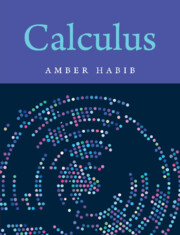Book contents
Summary
Calculus has two parts: differential and integral. Integral calculus owes its origins to fundamental problems of measurement in geometry: length, area, and volume. It is by far the older branch. Nevertheless, it depends on differential calculus for its more difficult calculations, and so nowadays we typically teach differentiation before integration.
We shall revert to the historical sequence and begin our journey with integration. Our first reason is that it provides a direct application of the completeness axiom without needing the concept of limits. The second is that important functions such as the trigonometric, exponential, and logarithmic functions are most conveniently constructed through integration. Finally, the student should become aware that integration is not just an application of differentiation or a set of techniques of calculation.
Suppose we wish to find the area of a shape in the Cartesian plane.We can, at least, estimate it by comparing the shape with a standard area, that of a square.We cover the shape with a grid of unit squares and count how many squares touch it, and also how many squares are completely contained in it. This gives an upper and a lower estimate for the area.We can obtain better estimates by taking finer grids with smaller squares. The figures given immediately below illustrate this process of iteratively improving the estimates.
We have said that we are estimating area. But what is our definition of area? In school books you will find descriptions such as “Area is the measure of the part of a plane or region enclosed by the figure.” It should be evident that this is not a very useful prescription. It means nothing without a description of the measuring process. In fact, the estimation process described above could become the basis for a meaningful definition of area, by requiring it to be a number that lies above all the lower estimates produced by the process, and below all the upper estimates. Its existence would be guaranteed by the completeness axiom. This is a promising start, but the sceptic can raise various objections that would have to be answered:
1. Could there be a figure for which multiple numbers satisfy the definition of its area?
2. If we slightly shifted or rotated the grids, could that change our calculation? That is, could moving a figure change its area?
- Type
- Chapter
- Information
- Calculus , pp. 43 - 78Publisher: Cambridge University PressPrint publication year: 2023



